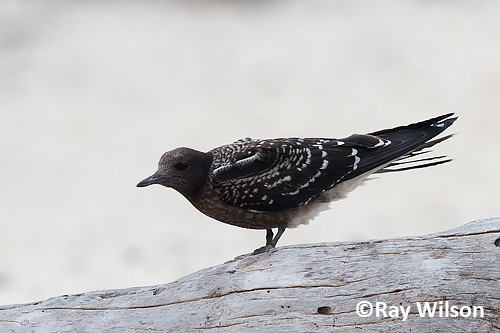
- Home
- Photography Tours
- Diary / Blog
- Galleries
- Foreign Trips
- Tasmania 2016
- NE Queensland 2016
- Western Alps 2016
- NE Spain 2016
- Australia's Wet Tropics 2015
- Australia's Top End 2015
- SW Australia 2015
- Switzerland 2015
- Andalucia 2015
- Belize 2015
- Australia 2014
- Switzerland 2014
- Belize 2014
- Bahama Islands 2014
- Switzerland 2013
- Ecuador 2012-2013
- Florida 2011-2012
- Vancouver Island 2011
- Australia 2010
- Peru 2008
- Bulgaria 2007
- Lesvos 2006
- California 2006
- New Zealand 2005
- Extremadura 2005
- Goa, India 2004
- The Gambia 2003
- About
August 2014
25th August 2014
Michaelmas Cay, Queensland, Australia
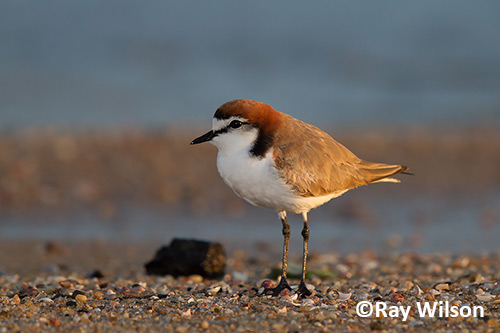
Red-capped Plover (Charadrius ruficapillus)
I'd booked a trip out to Michaelmas Cay, a small sand island on the Great Barrier, today. Since check-in was at 7:45am, and it is only a 45 minute walk from the campsite where I was staying to the ferry terminal, I left my campervan at dawn and sauntered slowly along Cairns esplanade towards the wharf, birding on the way.
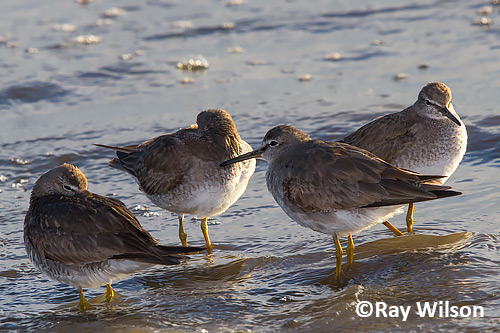
Grey-tailed Tattlers (Heteroscelis brevipes)
Unfortunately it was high tide and there were very few shorebirds along the water's edge, but those present were generally close enough for photography.
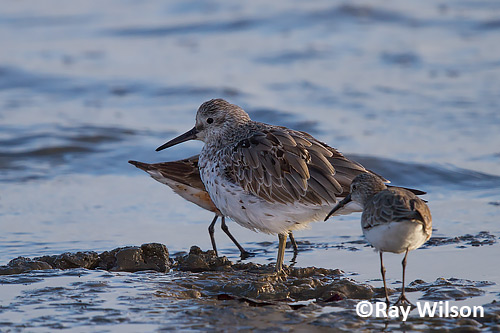
Great Knot (Calidris tenuirostris) & Curlew Sandpipers (Calidris ferruginea)
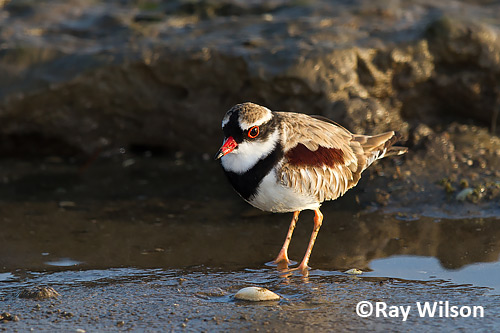
Black-fronted Dotterel (Elseyornis melanops)
Australians are generally a quite active and outdoor bunch, so it probably shouldn't have been so much of a surprise to me that even at 6:30am the esplanade was thronged with joggers and walkers. Luckily most of the birds didn't mind, except when the occassional dog-walker took their pet down onto the beach and invariably put what few shorebirds there were into flight.
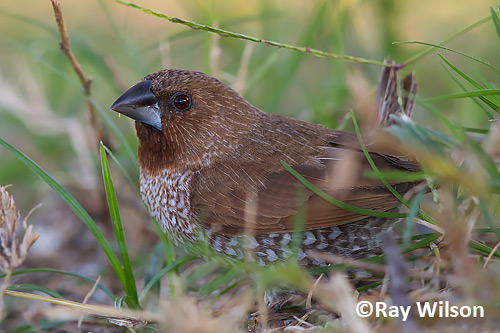
Nutmeg Mannikin (Lonchura punctulata)
On the shoreward side of the esplanade, a small flock of Nutmeg Mannikins, an introduced species to Australia, were feeding on the lawns completely unconcerned by the constant stream of joggers going past just a couple of metres away.
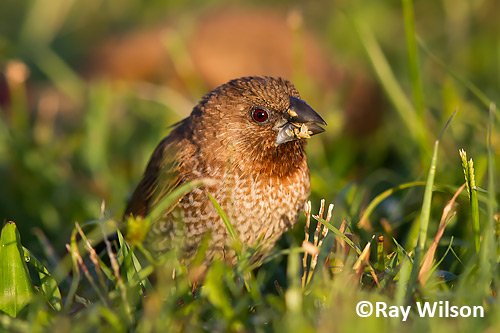
Nutmeg Mannikin (Lonchura punctulata)
Michaelmas Cay lies about 1.5-2 hours offshore from Cairns and is one of the few permanently exposed islands in the area. It is therefore an important nesting site for several species of tropical seabirds, such as Brown Booby, Sooty Tern and Common Noddy.
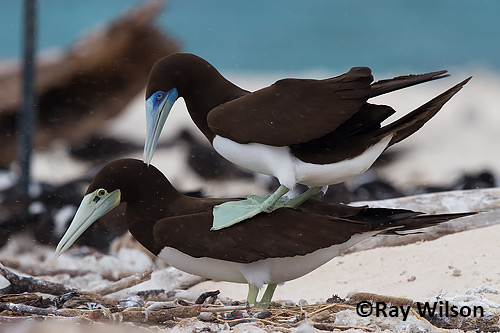
copulating Brown Boobies (Sula leucogaster)
Being in the Tropics, there isn't really much of a defined nesting season and there is generally at least some activity all year round. It also means the area is subject to the depredations of cyclones that sweep the area from time to time and the recent cyclone Ida caused considerable damage to the site, scouring all vegetation from the island, leaving nothing but bare sand for the birds to nest on and destroying the nests of all birds present at the time the cyclone hit. Consequently, breeding numbers are currently lower than normal, and while there may have been around 20,000 pairs nesting on the island in the past, there were probably only a couple of thousand when I was there and the species diversity was lower too, with no Black Noddys, Black-naped Terns or Lesser Frigatebirds being seen during my 4 hour stay on the island.
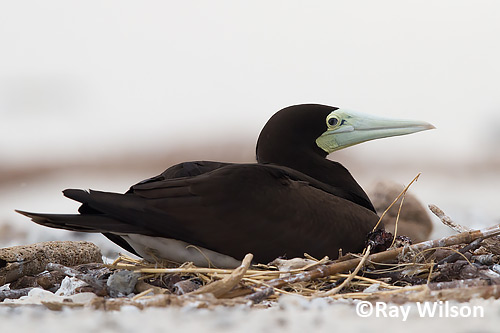
female Brown Booby (Sula leucogaster)
It was also quite disappointing from a photographic point-of-view. Whilst there were numerous birds very close to the viewing area, the strong, 18knot wind coming in from the Pacific meant that they were all usually facing away from me. Birds usually rest facing into the wind so that their feathers do not get ruffled but, as shown by the Common Noddy in the photo below, there are always exceptions to any rule!
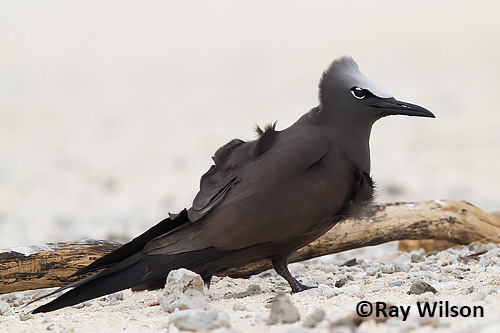
Common Noddy (Anous stolidus)
Others were a bit more sensible and were utilizing the scant wind protection offered by the few pieces of driftwood present.
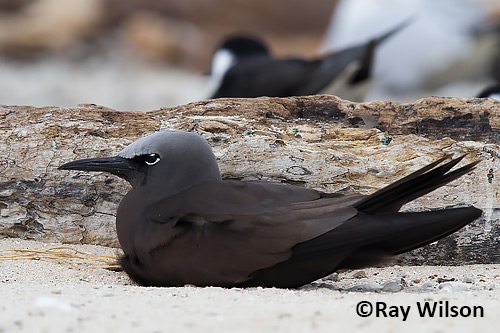
Common Noddy (Anous stolidus)
Flight photography opportunities were not much better since, again, the angle of the wind meant the birds were rarely approaching the island from an aesthetically favourable direction.
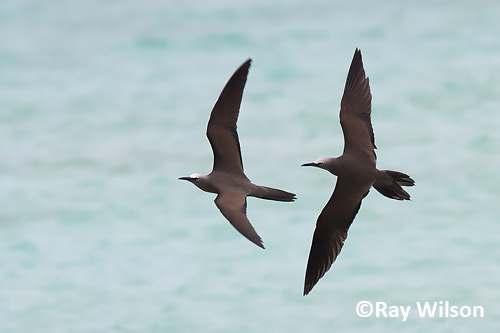
Common Noddy (Anous stolidus)
One or two did, however, approach from a reasonable angle so I did get a few decent shots.
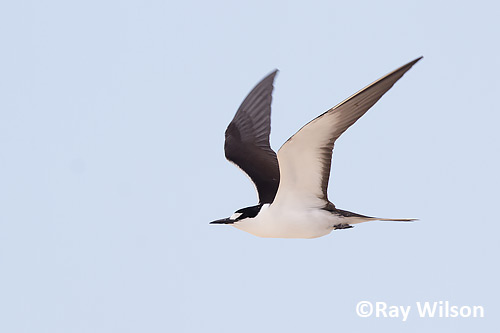
Sooty Tern (Sterna fuscata)
Sooty Terns were by far the commonest species on the 4 species present on the island at the time of my visit.
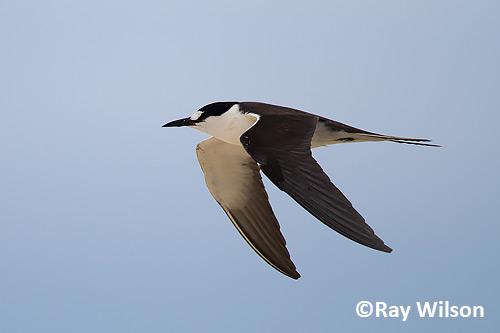
Sooty Tern (Sterna fuscata)
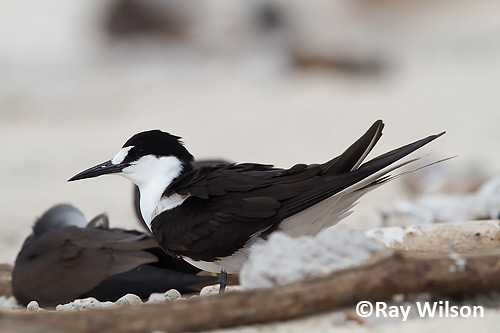
Sooty Tern (Sterna fuscata)
You can see how much the sand was getting blown around by the strong winds in the photo below...
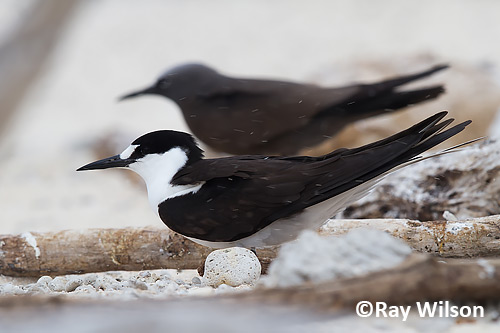
Sooty Tern (Sterna fuscata)
juvenile Sooty Tern (Sterna fuscata)
Ray Wilson owns the copyright of all images on this site.
They may not be used or copied in any form without prior written permission.
raywilsonphotography@googlemail.com
